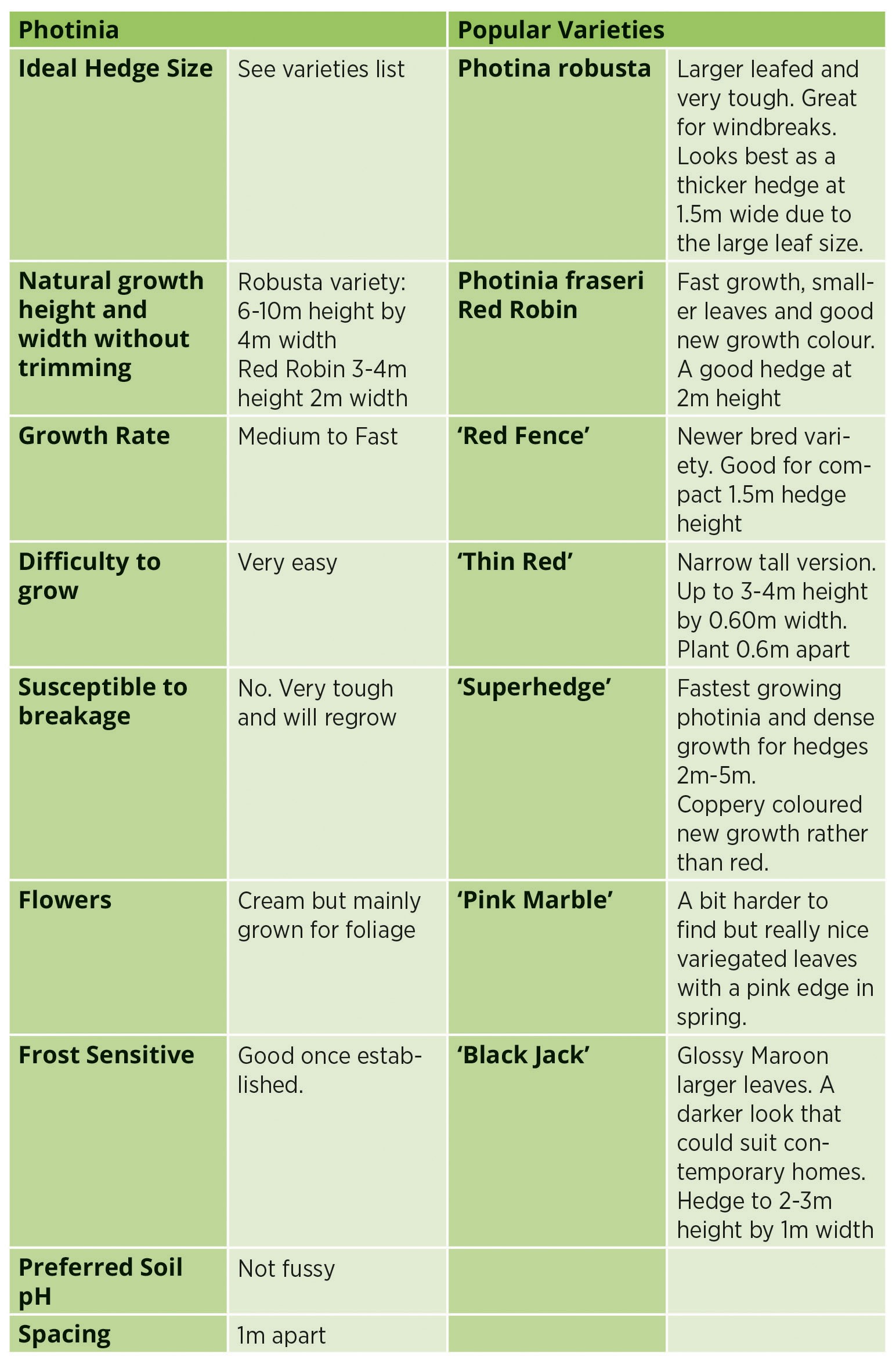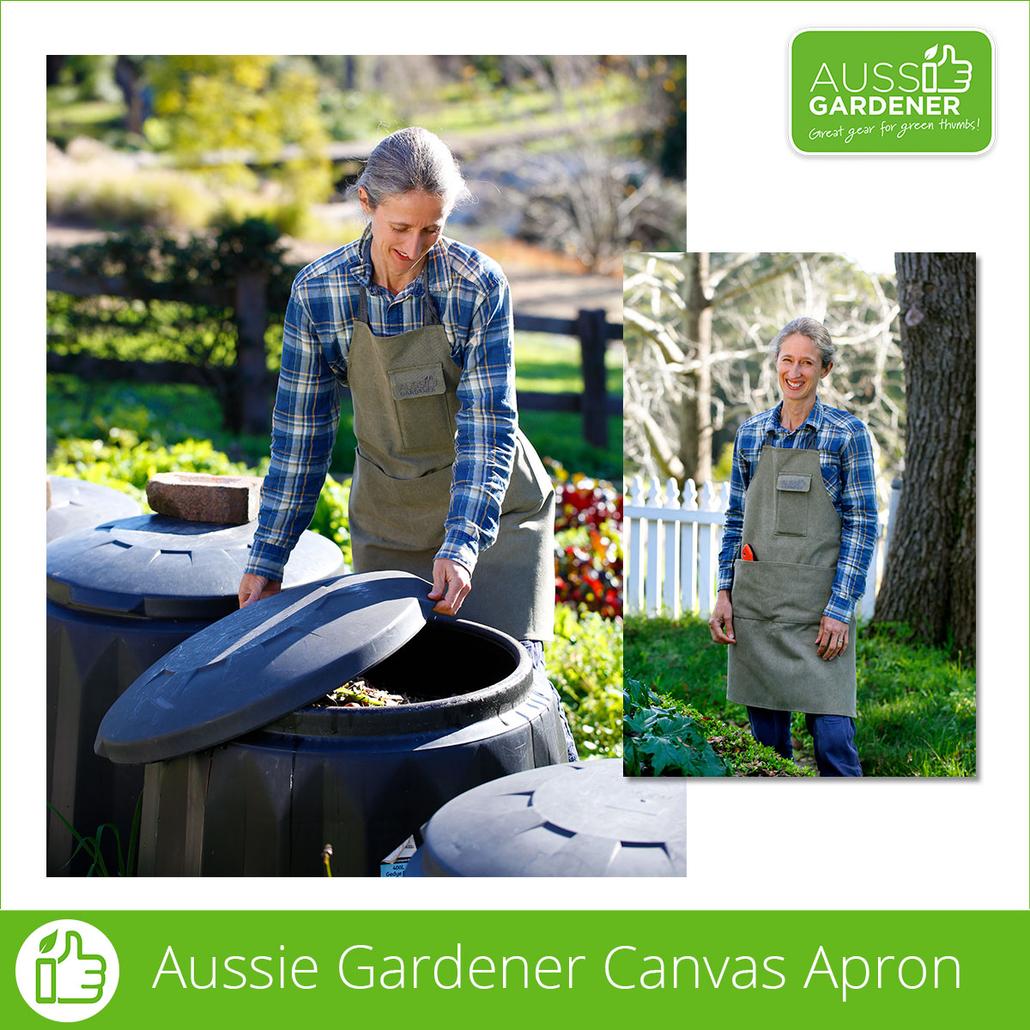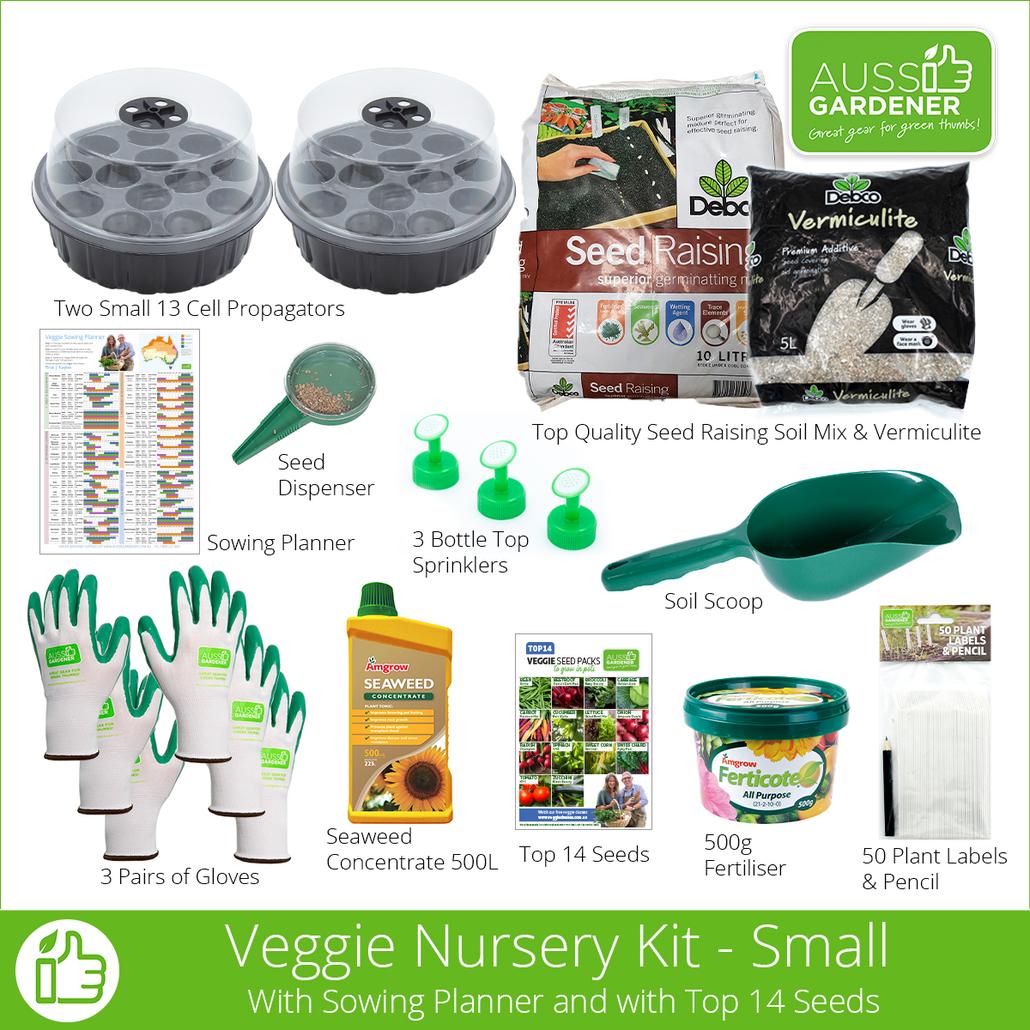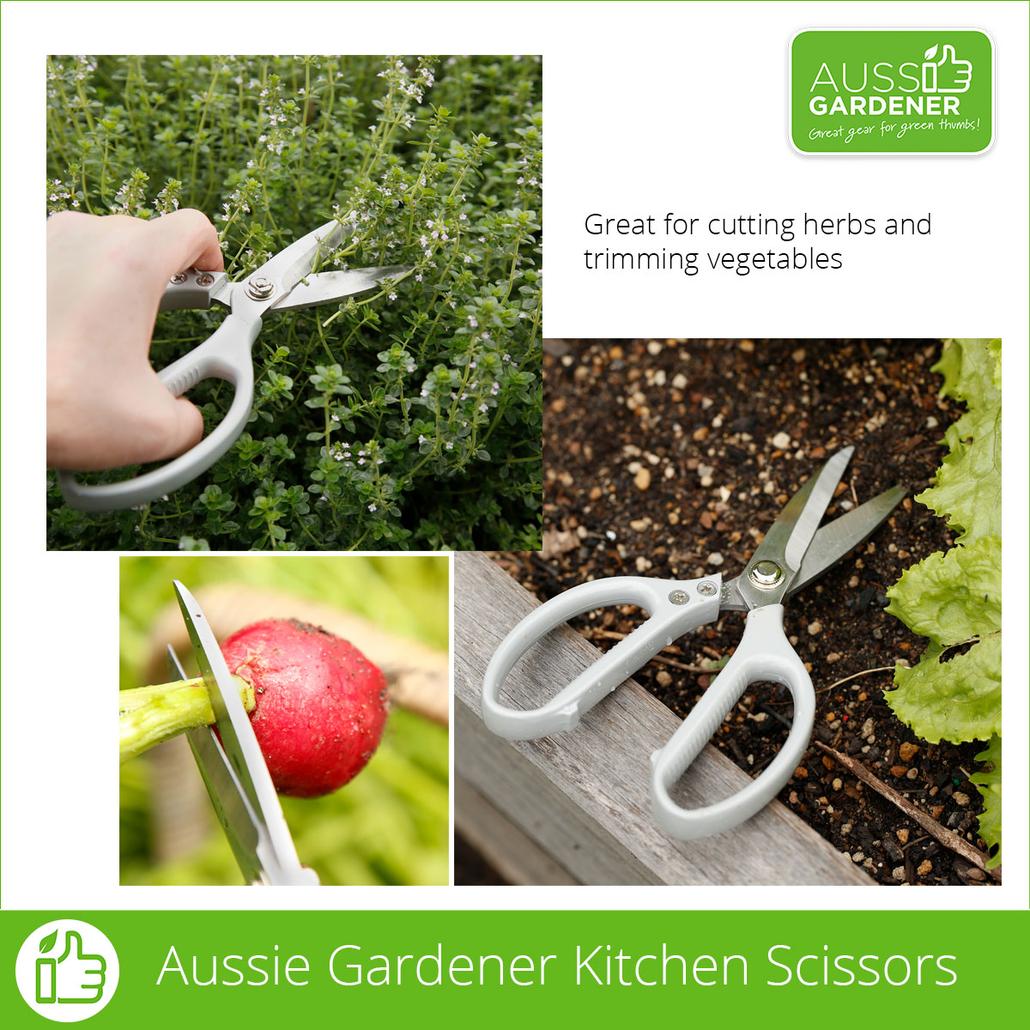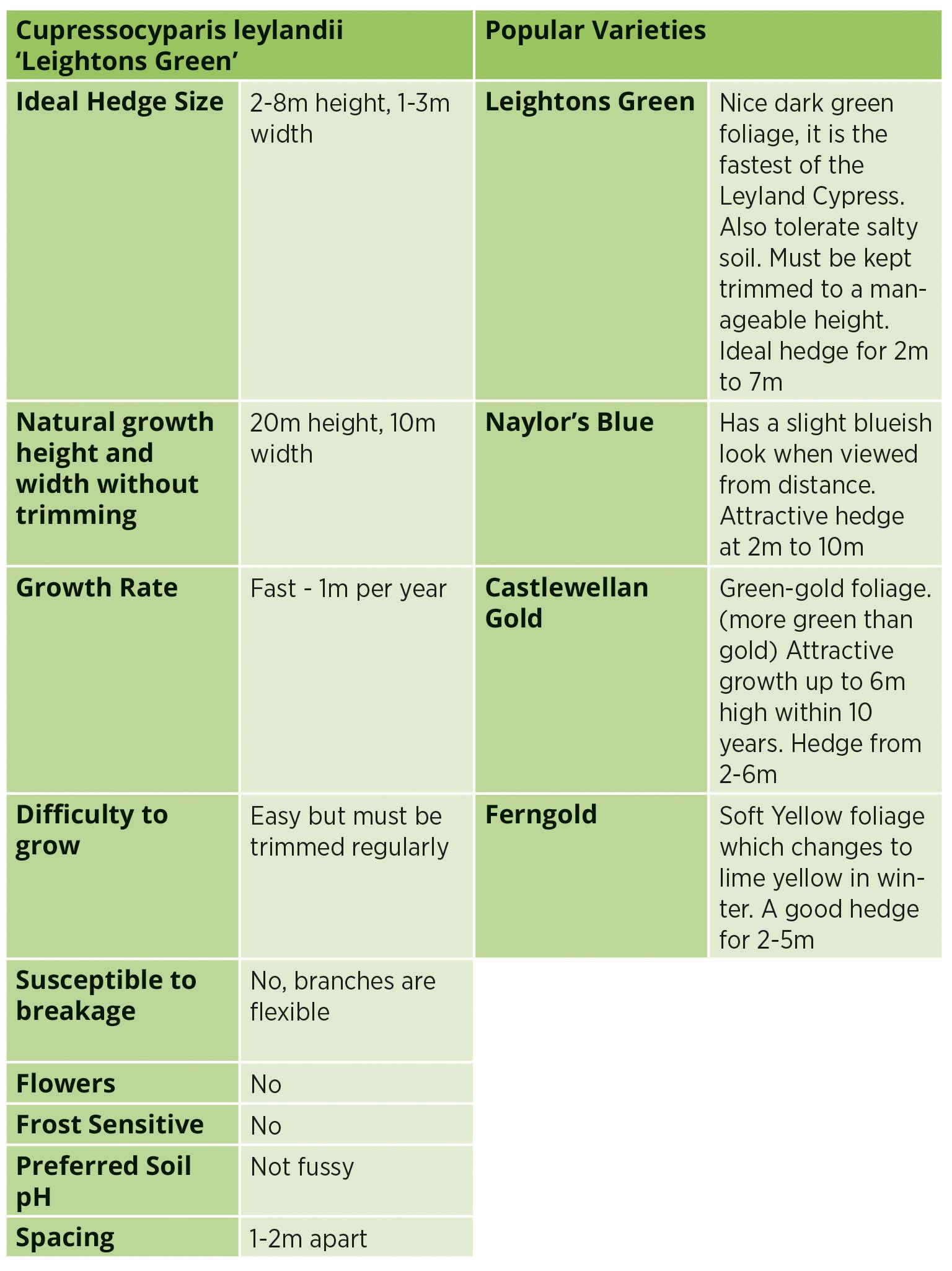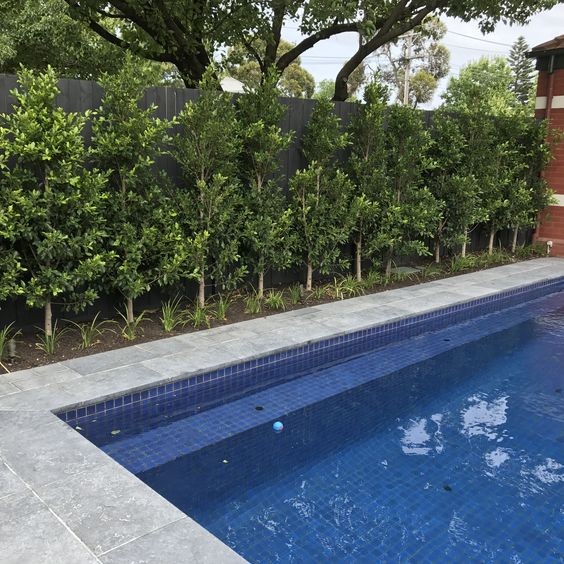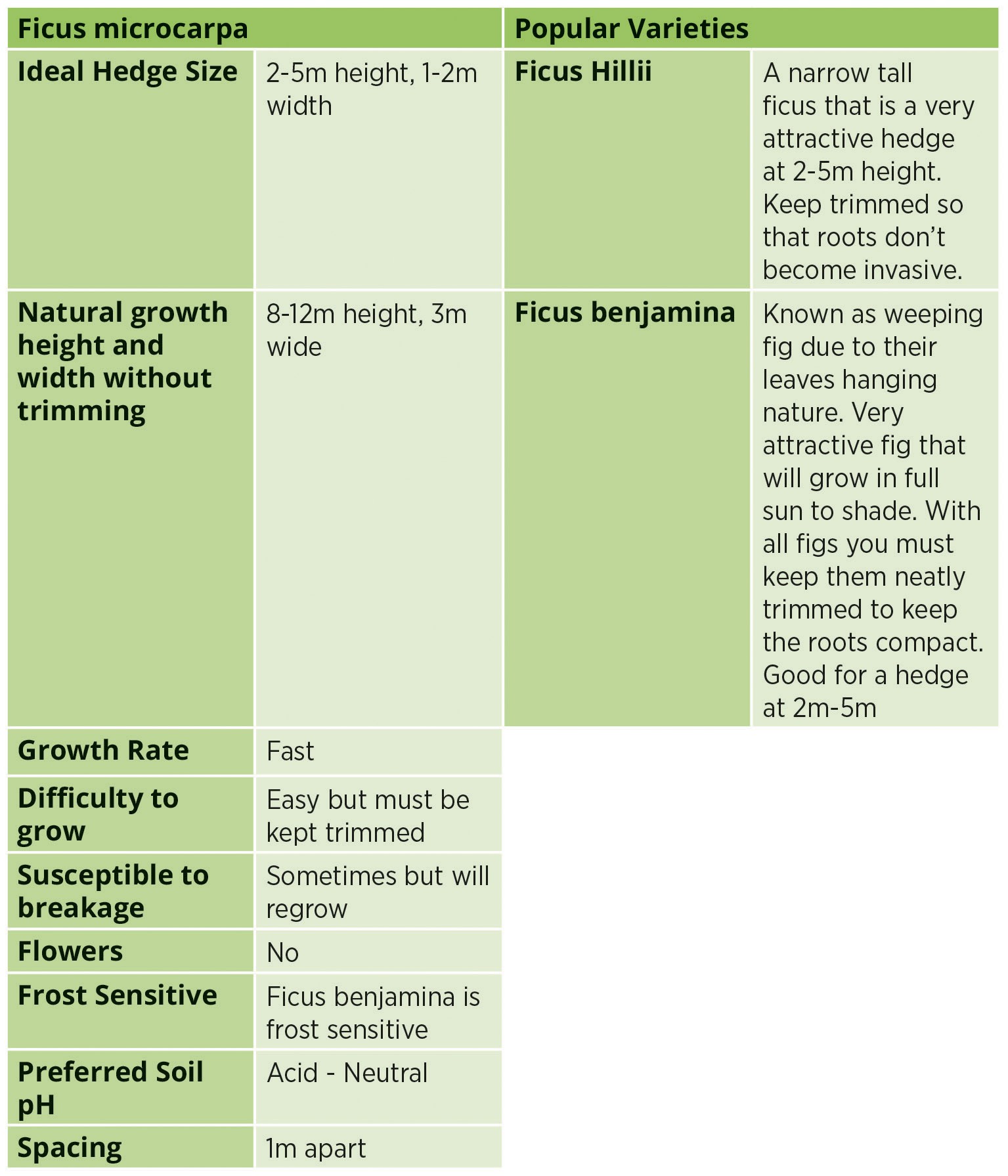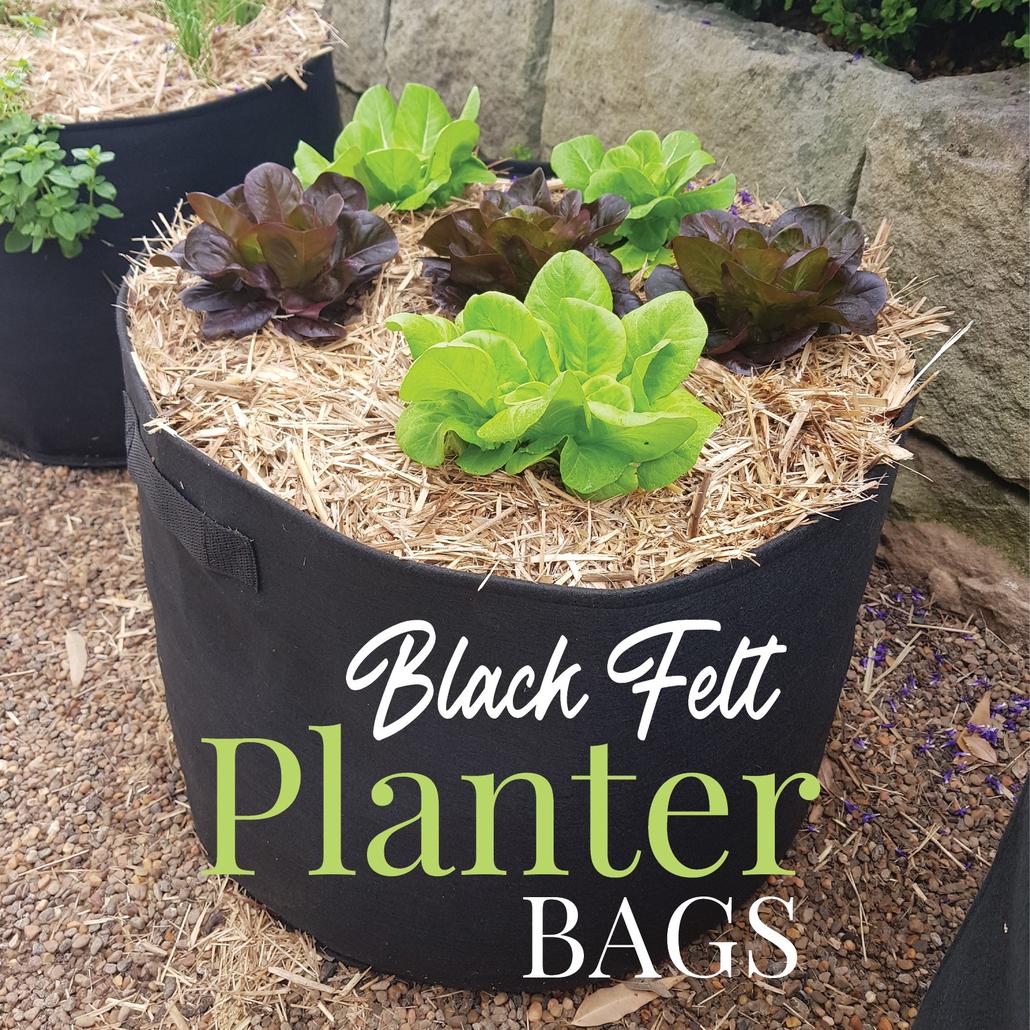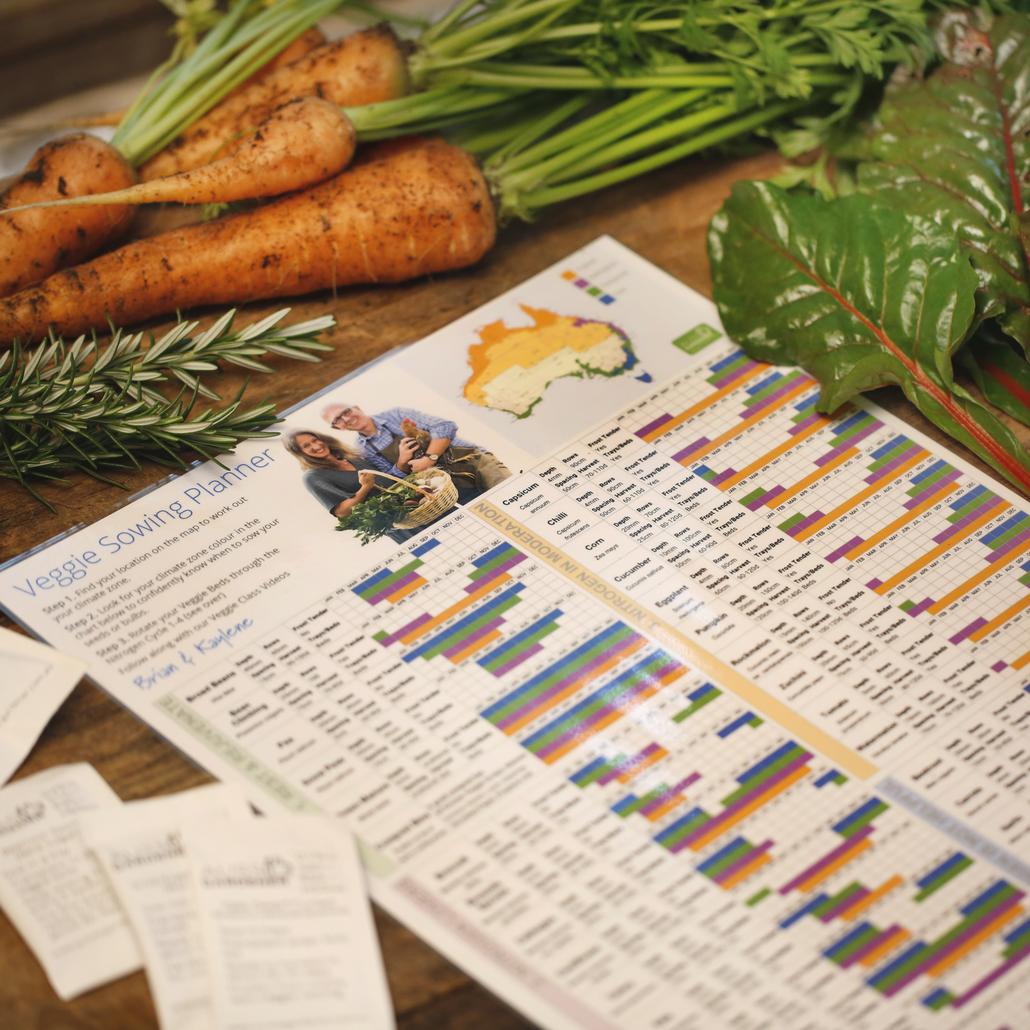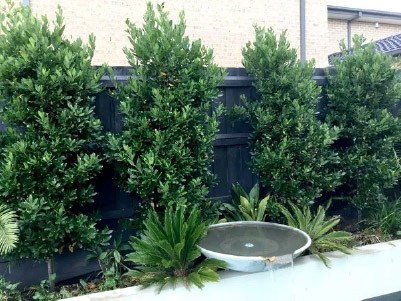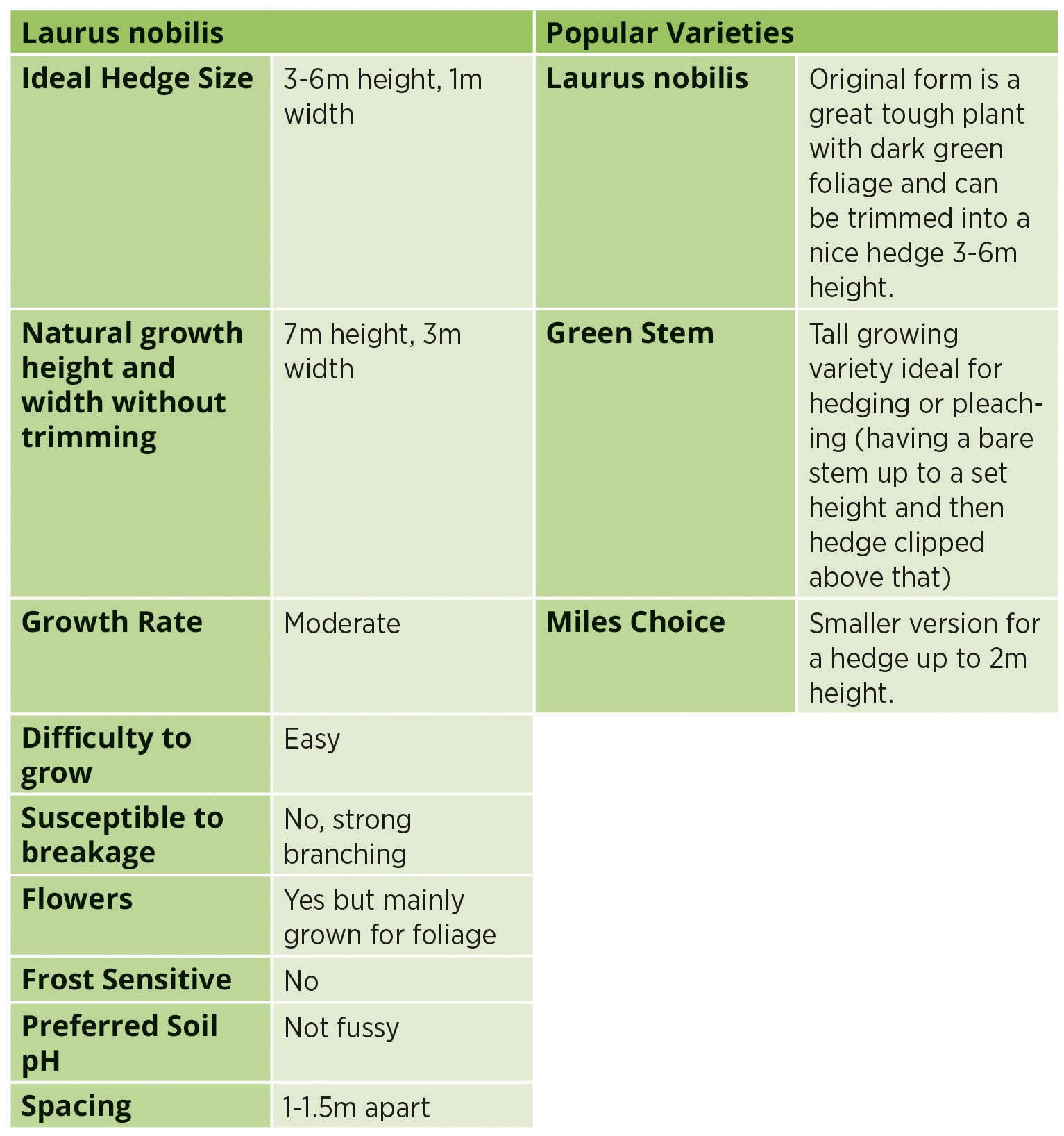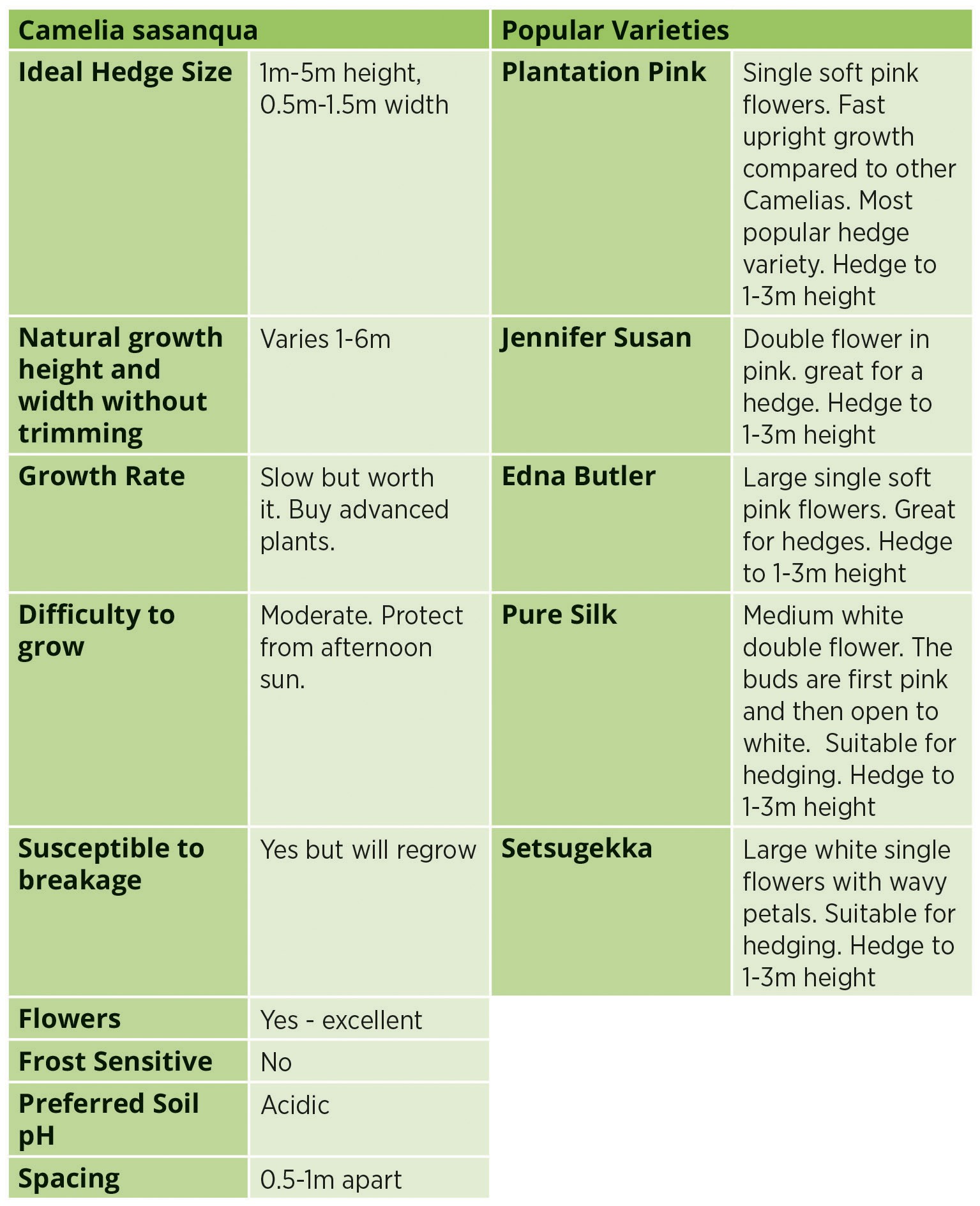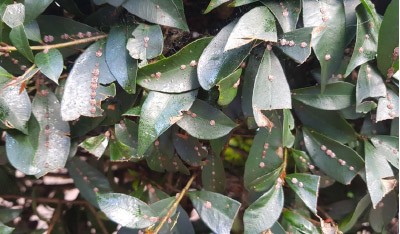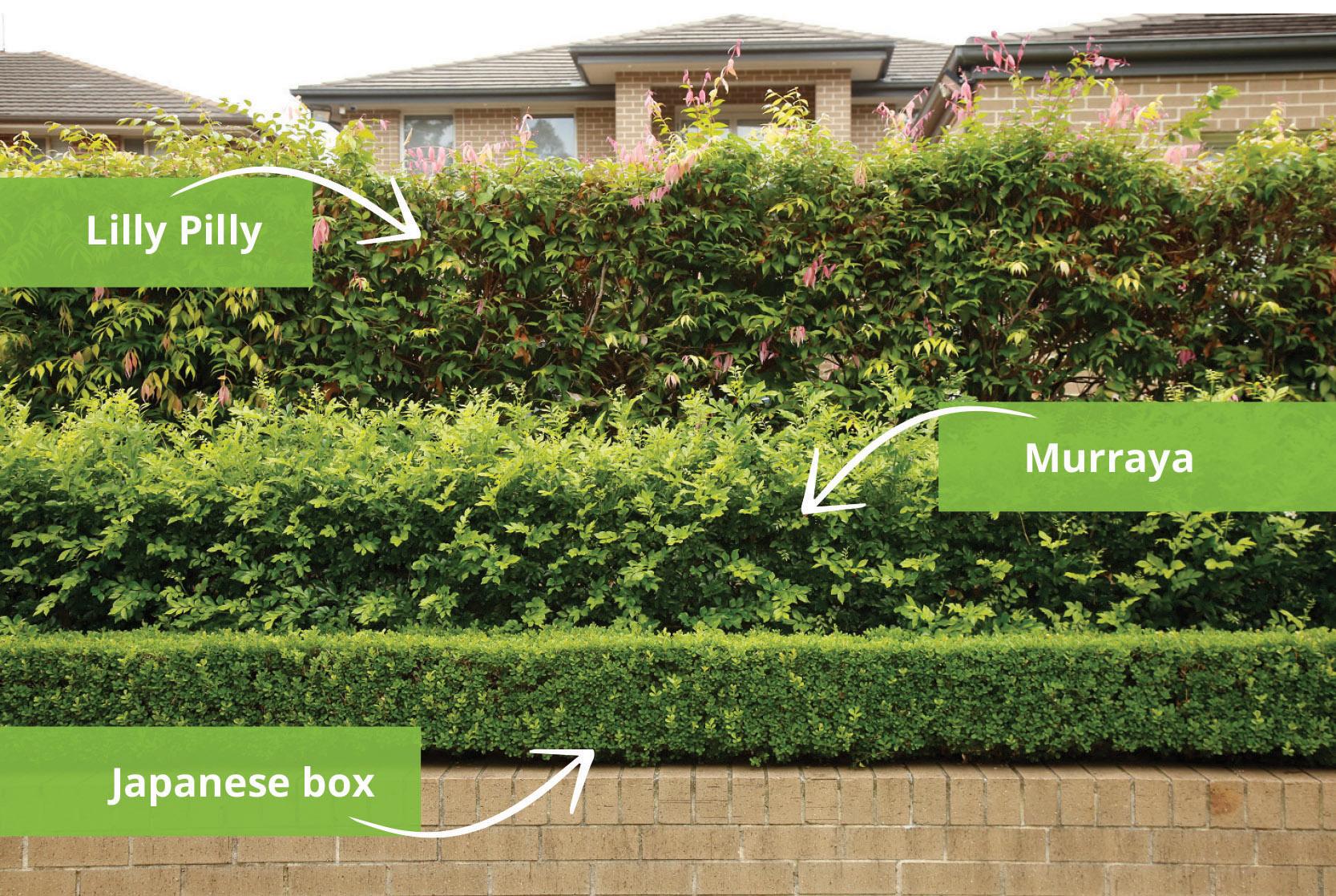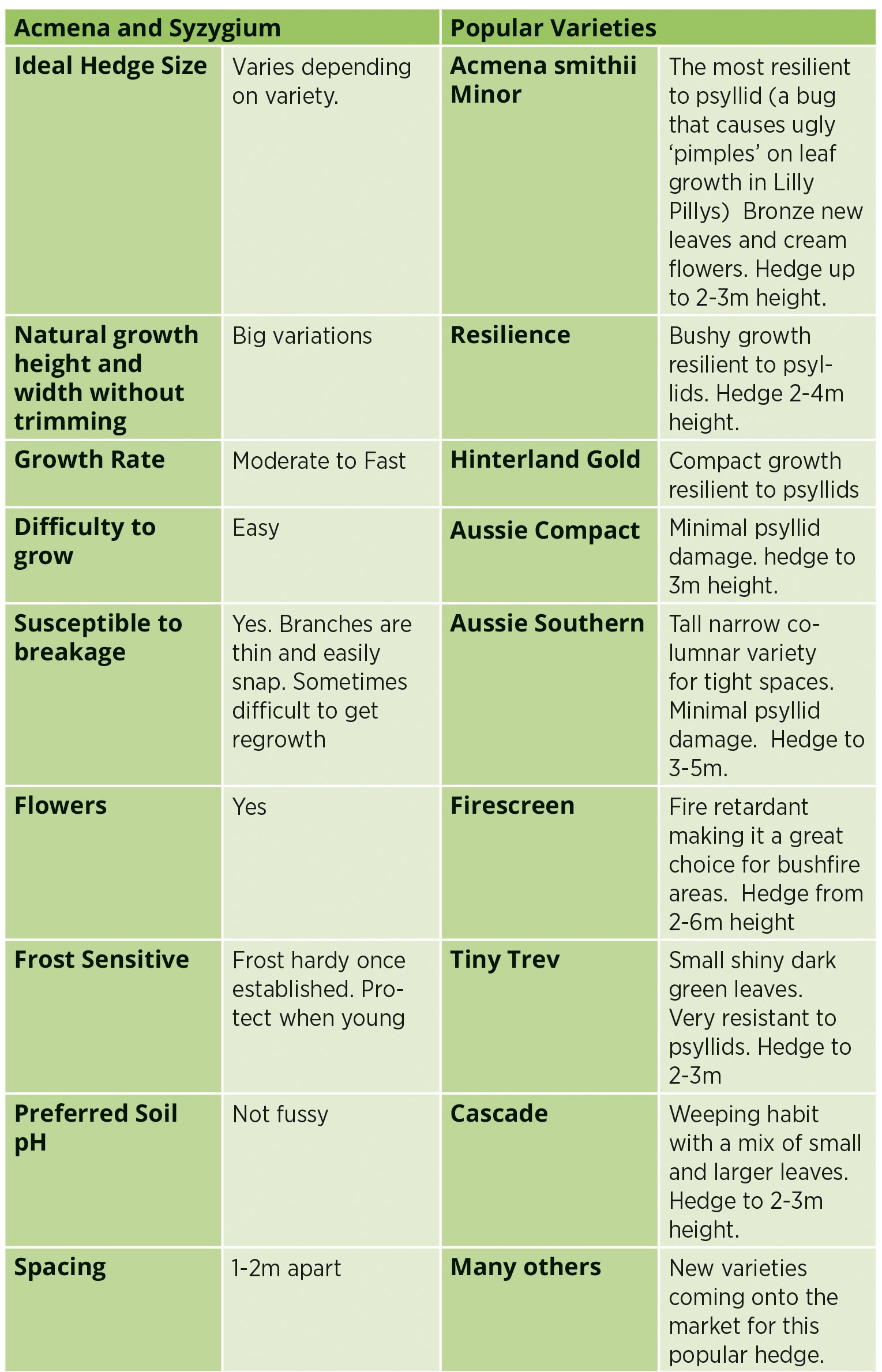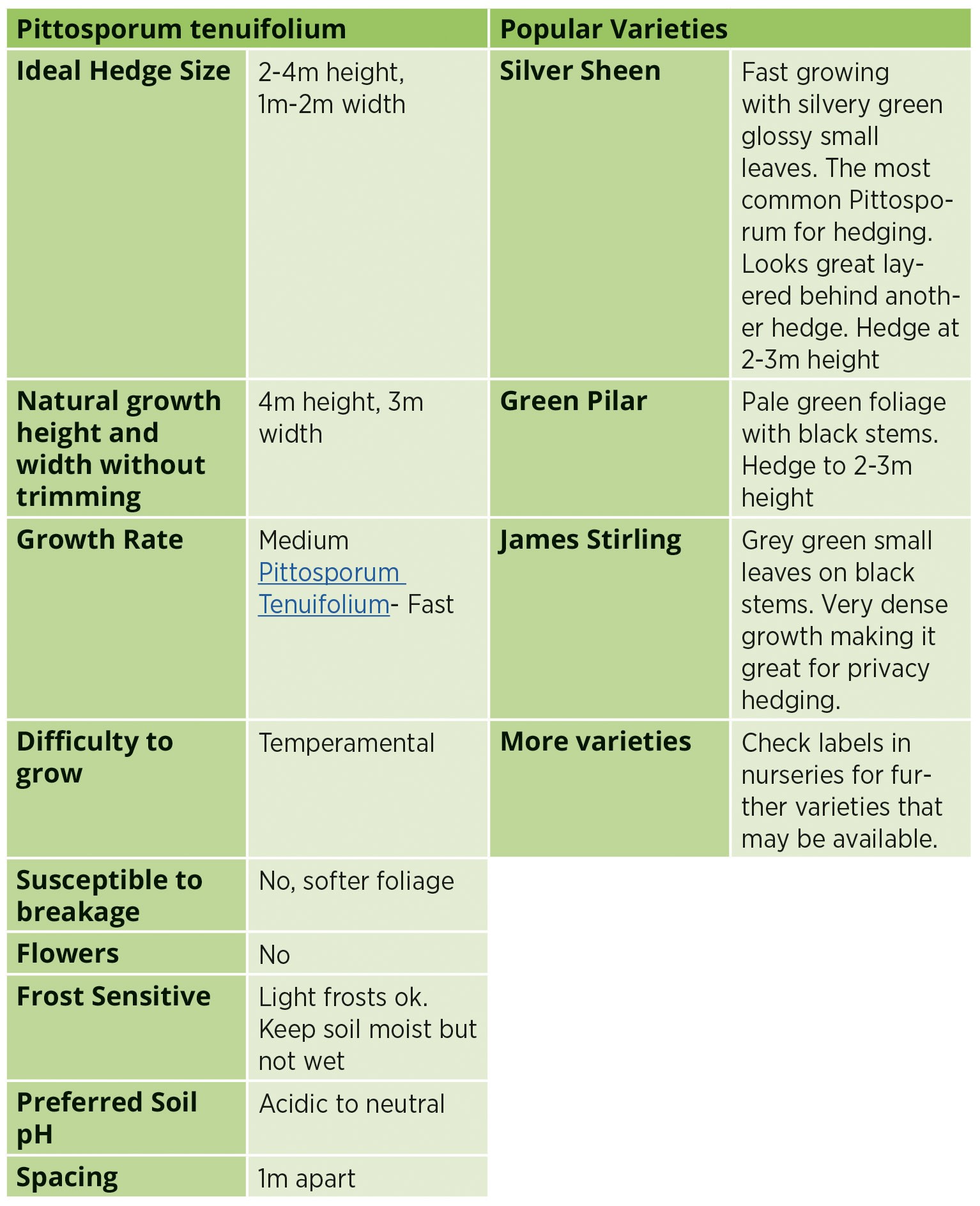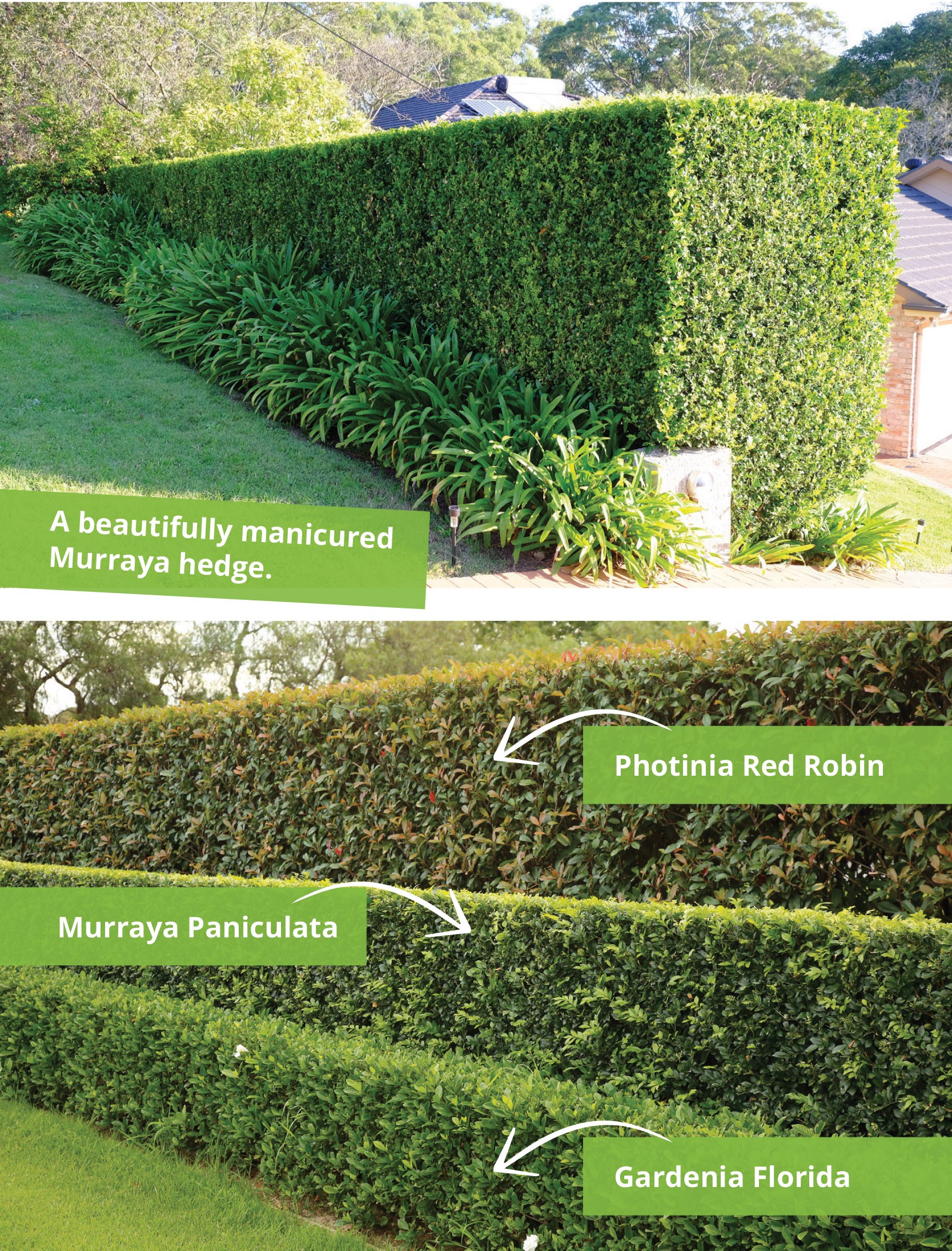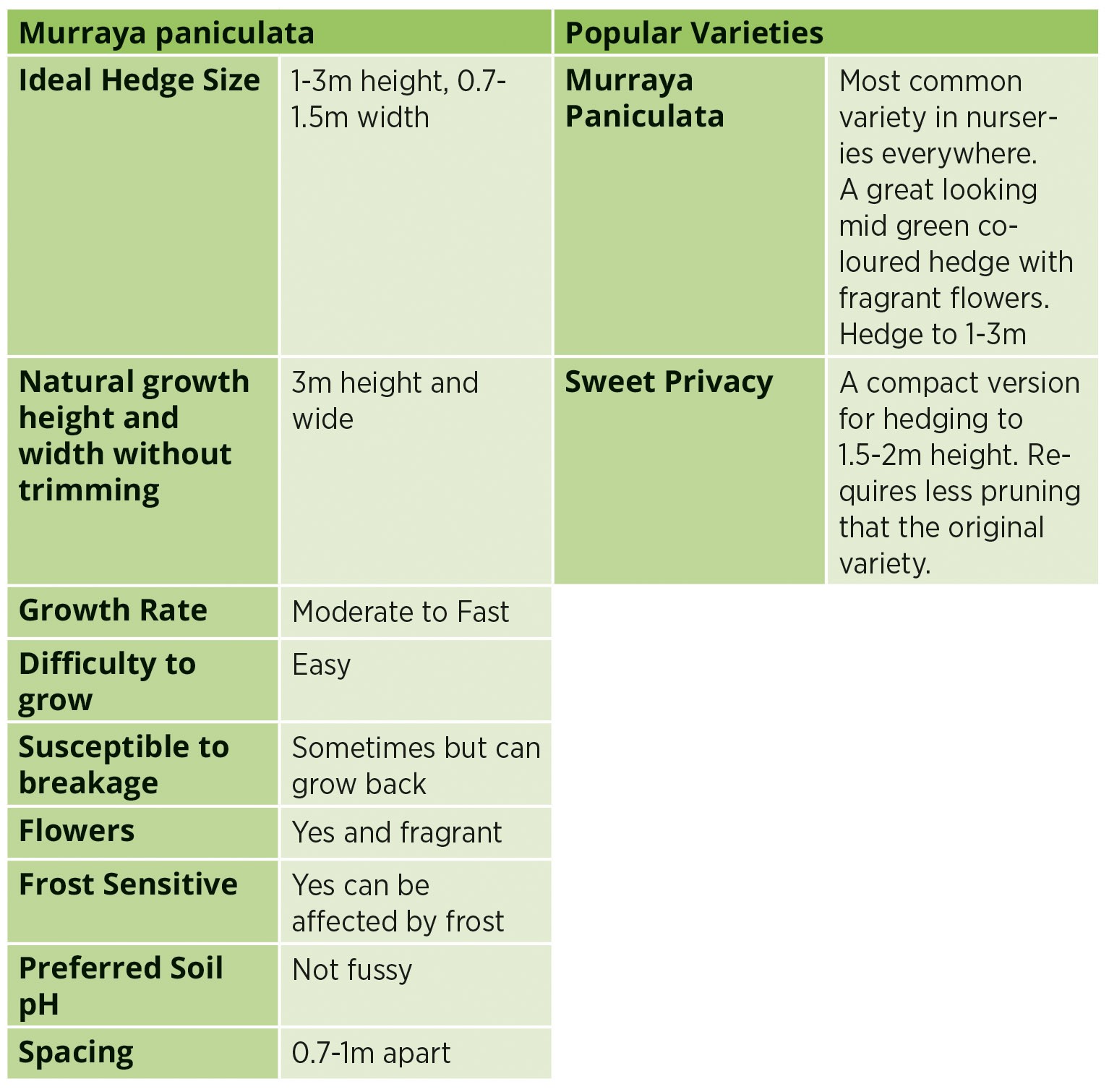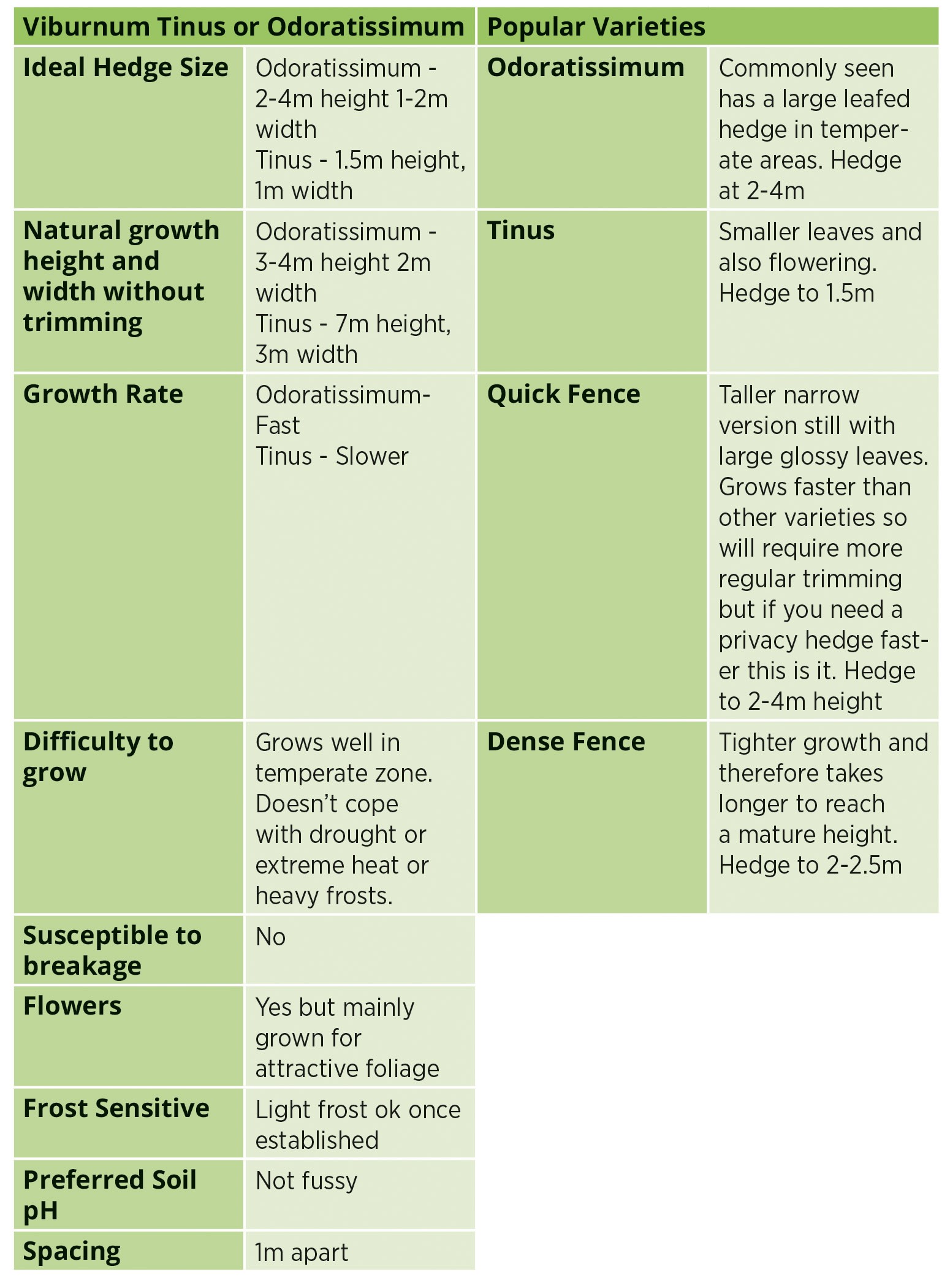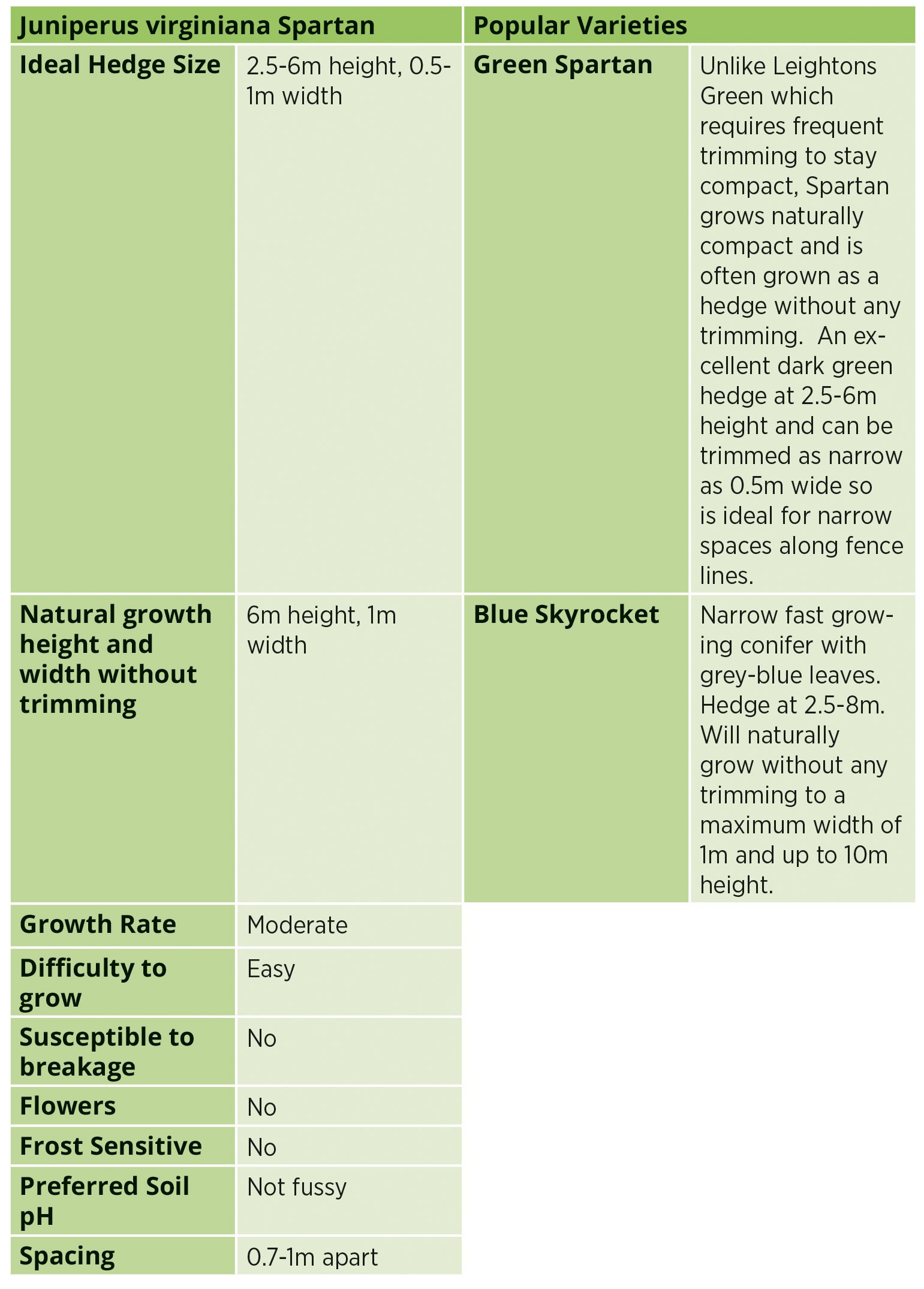With yards getting smaller and privacy getting harder, hedges have become an essential part of Aussie Backyards but they are also a beautiful architectural feature when done well.
In this article I’m going to show you the Top 10 tall hedges to grow in Australia for privacy, and why some hedges are not the right choice for your garden even if the nursery is saying otherwise.
This article will focus on taller hedges for privacy. We will cover a Top 10 lower growing hedges in another issue.
When deciding which hedge to plant in your garden here are some questions that are worth asking to help with your planning.
How tall do I need it to grow to achieve the desired privacy or to complement the garden design?
Is the planting space narrow and therefore needs a hedge that is very dense even when kept quite thin?
Who will be maintaining it and is there going to be issues getting access for trimming?
How fast do we need the hedge to reach its desired height? (Keep in mind, fast growing hedges also need more trimming in the future)
Is this area going to have children playing with balls that can damage some types of hedges?
Is our soil heavy clay or does it have a good thick layer of topsoil? (some hedges wont cope with heavy clay)
Is our area affected by frost and cold winters that may affect some hedges?
Is this hedge going to negatively impact on neighbours (eg. shading their pool?)
That may sound a bit overwhelming to consider all those points, but taking the time to work it out now will ensure you have a chosen the right hedge for your situation. Remember your local nurseryman will try to be helpful, but they are unlikely to take all of these things into account. They may also be influenced by what plants they have in stock at the time to get the sale. This article will help you to do the planning ahead of time and be confident in the choices made.
THE 10 BEST HEDGES FOR PRIVACY IN AUSSIE GARDENS
Photinia Robusta
This Photinia hedge has been fairly loosely trimmed. The Yellow leafed tree behind is a Golden Elm providing a great contrast against the red flushes of growth on the hedge below.
You may recognise this hedge around by the reddish leaves on new growth after it has been trimmed. We have this on our property along the fence lines to give us privacy from the neighbours and it is very effective. When trimmed you cant see through it.
They are probably the toughest hedge around, frost tolerant, drought tolerant, coastal tolerant with no real pest or disease issues. It has fallen a little bit out of flavour with Lilly Pillys often suggested instead, but I would have this hedge over those any day because it consistently looks good and if a branch breaks off, it grows back.
Another new variety I saw recently is Photinia robusta x serraluta ‘Black Jack’. It has darker foliage and could suit a more contemporary home looking for a bold dark hedge.
When buying from the nurseries, Photinias often don’t look all that attractive in the pot as the growth can look a bit sparse. Remember to choose your hedge based on how it grows when trimmed, not by how it looks in the nursery pot.
A more tightly trimmed Photinia Robusta providing total privacy from the street for the side facing windows in this home.
Photina Robusta underplanted with English Ivy
Canvas Garden Apron
Easy to slip on without having to change into gardening clothes.
Veggie Nursery Kit
Everything you need to start growing veggies at home.
Kitchen Harvesting Scissors
Stainless steel blades. Aluminium handles. Made to last. Best scissors you will own.
Cypress Leightons Green
Cup. leylandii Leightons Green
Leightons Green when trimmed creates a very dense hedge
One of the most popular hedging plants for privacy is Leightons Green. Grows fast and has attractive dark green foliage. If left untrimmed these trees can reach 20m tall and 5 metres wide. You will often see them used as windbreaks on country properties. If there are sheep in the area that will eat all the lower branches they can reach and you get a neat trimmed line along the bottom of this hedge.
Like a lot of these hedges, they can be grown as a tree, or trimmed regularly to produce nice dense growth that gives 100% privacy. When buying from the nursery, they look quite sparse and often inexperienced gardeners end up buying something else that looks bushier in the pot. That’s why reading articles like this to get your green thumb knowledge up will give you the results you desire and not make the rookie mistakes.
I’ve seen this as a hedge trimmed to almost nothing at 50cm wide and 2m tall, but I think it looks nicest as a hedge around 2-3m tall and 1metre wide. Its tough, will cope with children playing and overall a fantastic hedge.
Close up of the Leightons Green foliage recently trimmed.
Leyland Greens being used as interesting architectural fins in this country garden near Bowral.
There is a variety of Ficus that grows narrow and tall and makes a very attractive hedge. Now for some readers the alarm bells are going off just mentioning ficus because those massive trees you see in city parks with the impressive root systems appearing above ground are also ficus. There is a fear that you plant any type of ficus and it ends up turning into a massive tree and damages pipes.
Is this fear true though?
Plants generally spread their roots about the same width as the leaf canopy above it, which makes sense for it to be balanced and stable.
When you keep it trimmed and watered, the roots dont need to go out as wide either. But does this really apply to ficus as well?
I visited the USA a couple of years ago and noticed particularly in Hollywood there were these very tall and attractive hedges and they were all made using Ficus. I visited one of the major nurseries over there where these are grown (very impressive operation ) and they explained that when kept trimmed the roots don’t become invasive. To be honest if I hadn’t seen it, I would not have believed what they were saying, but having walked around lots of streets over there where Ficus was used as a hedging plant and topiarised street tree, there was no visible issues with roots taking over.
They referred to it as Indian Laurel (botanical: Ficus nitida)
I think we will start seeing selected varieties of Ficus used as privacy hedging but if you do plant it, remember to keep it trimmed as a hedge.
The variety that is being promoted in Australia is called Ficus microcarpa ‘Flash’
It grows to 10m high by 3m wide if left untrimmed.
As a hedge it would be good for 3-5m tall and 1-1.5m wide.
Good for reducing traffic noise, producing shade and a high level of privacy. It is an Australian native, tough as nails once established, but frost sensitive when young.
It will grow quite fast in Australia’s warm climate so be prepared for regular trimming. If you are growing a tall hedge over 3m you will need access for a cherry picker or ladder platforms to trim it safely so plan for that when you plant.
Selected ficus are now being used in designs even in narrow spaces alongside pools. Read more here
Geofelt Planter Bags
Easy to move about and built really tough to last for several years of use, now everyone can have a go at growing veggies.
4 Seasons of Veggie Seeds
We have put together 24 of the best growing varieties of vegetables in one easy kit. Nothing Genetically modified. All good solid varieties that have been growing in australia for the last 20 or more years. Enough for a full year of veggie growing (and more)
Veggie Sowing Planner
The complete guide for when to plant your veggies and how long they will take to harvest. Covers all of Australia and is very easy to follow. Covers seed depth, row spacing, frost sensitivity, harvest timeframe, crop rotation and planning out your beds.
The distinct dark green leaves of the Bay Tree. In this garden it was a 4m high hedge maintained with a cherry picker.
Bay leaves that you use in cooking, come from this tree. They not only smell great, but also make a very nice looking dark green hedge. It is a very tough plant so will cope in areas where kids are playing.
It makes a great taller hedge of 3-4m high and about 1m wide. Quite suitable to have alongside pool areas and provide great privacy. The more you prune it the smaller the leaves tend to get which provides a denser cover.
A stunning Camelia hedge in flower on a country property.
If you want a classic, classy hedge, you can’t go past Camelias but you will have to be patient as they aren’t fast growers. Generally if you drive around the more upmarket suburbs you will see Camelia Sasanqua as the main hedge of choice. Nice dark glossy leaves and beautiful flowers. They cope with full sun to quite shady conditions. Being a slow grower, plants in nurseries may cost a bit more. If you can afford it get more advanced specimens to give you a good head start.
Drive around the more upmarket areas of your city and you are likely to find established Camelia Sasanqua hedges.
Camelias are a little fussy when it comes to soil. They don’t like clay and also like the soil pH to be a bit more acidic. You can test your soil using our pH/moisture meter
unprcincl:--:1:|~|:slctvrnt:--::|~|:shwqty:--:true:|~|:qty:--:1:|~|:prdurl:--:/cart:|~|:prdimgtp:--:variant:|~|:prdimgclass:--:zpa-mobile-align--center zpa-align--center pia-39485181:|~|:prdimgalt:--:Aussie Gardener 2 in 1 pH & Soil Moisture Meter:|~|:prdclass:--:ba-39485181:|~|:prdbtnltp:--:cart:|~|:prdbtninmncl:--:1:|~|:prdbtninalcl:--:1:|~|:prdbtnelt:--:_self:|~|:prdbtncpt:--:BUY NOW!:|~|:prdbtnclass:--:zpa-button-padding-medium bcss-39485181:|~|:prdbtnalign:--:zp zpa-button-alignment-left:|~|:prdbdhtml:--:
This clever device doesn't need any batteries and will give you readings on the pH level of your garden beds as well as the moisture content. www.veggieclasses.com.au
:|~|:mcontclstclass:--:cac-39485186:|~|:mcontclass:--:zpa-plain-product-022-v3 zpa-plain-product-022 cluster-padding-medium zpa-block-stacking--ltr zpa-block-valign--top ba-39485186:|~|:imgpos:--:left:|~|:handle:--:2-in-1-ph-soil-moisture-meter:|~|:eid:--:39485181:|~|:descclass:--:pda-39485181:|~|:dcrt3class:--:ba-39485182:|~|:dcrt2class:--:ba-39485185:|~|:dcrt1class:--:ba-39485184:|~|:crtmsgclass:--:pcma-39485181:|~|:clstid:--:8418481:|~|:brdclass:--:ba-39485183:|~|:addcrtmsg:--:Product has been added to cart
If you have a lot of clay close to the surface, you will do best to mound up new soil and plant the Camelias in that layer rather than digging down. To make your soil more acidic, add compost, broken down leaf matter and mix it in. Apply a good layer of mulch after you plant.
There are a few different types of Camelias, some with large leaves and growing more open branched. The one you need for hedges is called Camelia Sasanqua. There are lots of colours available in the flowers so be sure to check out the labels when buying.
One of the most popular and fastest of the hedging Camelias is called Plantation Pink.
Lilly Pilly
Acmena and Syzygium spp
If pruned frequently, Lilly Pillys can get a very dense coverage.
This is the main hedge you will see promoted in nurseries nowadays. It is an Australian Rainforest native and fast grower. A lot of different varieties available with many being specifically promoted for hedging. Many of them produce a small edible fruit which is ok to eat. Not amazing. Good for preserves and jams.
They do prefer decent fertile soil but still seem to cope with tough conditions in drought, full sun to part shade. Frost and coastal hardy too.
When left untrimmed they can grow as high as 30m so quite a large tree. They do cope well with regular pruning and new foliage often has a reddish tinge.
They do have a couple of pest problems worth mentioning.
Lilly Pilly Psyllid - A tiny insect that burrows under the leafs surface creating lumps on the surface. Not very pretty. Some of the earlier varieties of Lilly Pilly sold over the last 20 years were not Psyllid resistant so this gives them a bad wrap sometimes. The newer breeds, are promoted as being resistant so its becoming less of a problem.
Scale - shell like lumps on the leaves. These suck the sap from the leaves and stems and can really do a lot of damage. You can scrape them off the leaves with your fingernail if the infestation is only minor, otherwise spraying with white oil in the morning on a cool day can get them under control. This is less effective on the adult scale as they have a protective cover.
Upon close inspection it had a significant Scale infestation that will eventually take over the plant. The hired landscape maintenance person needs to get onto this.
Despite these pest issues, Lilly Pilly are a good, fast hedging plant. Not as tough as some of the others though so I dont recommend them in backyards with kids playing. A stray soccer ball can easily knock off their thin branches and they dont always grow back well. They tend to look good in pots at the nursery due to their bushy growth which makes them an easier sell, hence why nurseries love them.
Acmena varieties of Lilly Pilly are often used to create a more relaxed hedge.
Pittosporum
Pittosporum tenuifolium ‘Silver Sheen’
Pittosporum can be pretty special if you are willing to put the effort into keep it happy.
Small leaves that can be quite dense when trimmed regularly. The leaves are a pale green with a silver look to them en masse. They can be a little temperamental and suddenly die off without much warning. Often it is due to poor drainage so this is not a good one to be planting in heavy clay. Better to mound good soil up like you do with Camelias and plant in that. It also doesn’t like being too dry either. I wouldn’t recommend this one for the beginner gardeners unless you want a bit of a challenge for your green thumb.
Keep mulch away from the stem and keep an eye on the soil moisture. A good slow watering once (maybe twice in summer) is better for it than frequent short waterings. Aim to keep the soil moist but not wet.
Orange Jessamine
Murraya paniculata
If your Murrayas are looking a bit pale, it usually means it needs either food or water. Watch out for hydrophobic soils under dense hedges as the rain doesn’t get through as much and the ground can really dry out. Give it a dose of Wettasoil which will help the water soak in better and also a fertiliser high in nitrogen to green up the leaves. Nitrosol is great for quick fast boost, otherwise use Amgrows Ferticote as a slow release fertiliser that lasts several months.
Space at 0.5-1m apart.
unprcincl:--:1:|~|:slctvrnt:--::|~|:shwqty:--:true:|~|:shwimglbl:--:false:|~|:qty:--:1:|~|:prdurl:--:/cart:|~|:prdttlclass:--:pta-39486056:|~|:prdttl:--:
Amgrow Wettasoil with Seaweed
:|~|:prdimgtp:--:variant:|~|:prdimgsrcset:--::|~|:prdimglblttl:--:BEST VALUE:|~|:prdimglblattr:--:class="zpa-image-label zpa-image-label--top-left zp pila-39486056":|~|:prdimgclass:--:zpa-mobile-align--center zpa-align--center pia-39486056:|~|:prdimgalt:--:Amgrow Wettasoil with Seaweed:|~|:prdimg:--:https://cdn.shopify.com/s/files/1/1413/8314/products/Wettasoil-1Litre-AG83012.jpg?v=1622794011:|~|:prdclass:--:ba-39486056:|~|:prdbtnltp:--:cart:|~|:prdbtninmncl:--:1:|~|:prdbtninalcl:--:1:|~|:prdbtnelt:--:_self:|~|:prdbtncpt:--:BUY NOW!:|~|:prdbtnclass:--:zpa-button-padding-medium bcss-39486056:|~|:prdbtnalign:--:zp zpa-button-alignment-center:|~|:handle:--:wettasoil-with-seaweed:|~|:eid:--:39486056:|~|:dcrt3class:--:ba-39486059:|~|:dcrt2class:--:ba-39486066:|~|:dcrt1class:--:ba-39486064:|~|:crtmsgclass:--:pcma-39486056:|~|:brdclass:--:ba-39486062:|~|:addcrtmsg:--:Product has been added to cart unprcincl:--:1:|~|:slctvrnt:--::|~|:shwqty:--:true:|~|:shwimglbl:--:false:|~|:qty:--:1:|~|:prdurl:--:/cart:|~|:prdttlclass:--:pta-39486055:|~|:prdttl:--:
Nitrosol
:|~|:prdimgtp:--:variant:|~|:prdimgsrcset:--::|~|:prdimglblttl:--:BEST VALUE:|~|:prdimglblattr:--:class="zpa-image-label zpa-image-label--top-left zp pila-39486055":|~|:prdimgclass:--:zpa-mobile-align--center zpa-align--center pia-39486055:|~|:prdimgalt:--:Nitrosol:|~|:prdimg:--:https://cdn.shopify.com/s/files/1/1413/8314/products/Nitrosol-Liquid-Blood-_-Bone-_white_500mL-AG56015.jpg?v=1588490676:|~|:prdclass:--:ba-39486055:|~|:prdbtnltp:--:cart:|~|:prdbtninmncl:--:1:|~|:prdbtninalcl:--:1:|~|:prdbtnelt:--:_self:|~|:prdbtncpt:--:BUY NOW!:|~|:prdbtnclass:--:zpa-button-padding-medium bcss-39486055:|~|:prdbtnalign:--:zp zpa-button-alignment-center:|~|:handle:--:nitrosol:|~|:eid:--:39486055:|~|:dcrt3class:--:ba-39486058:|~|:dcrt2class:--:ba-39486065:|~|:dcrt1class:--:ba-39486063:|~|:crtmsgclass:--:pcma-39486055:|~|:brdclass:--:ba-39486061:|~|:addcrtmsg:--:Product has been added to cart unprcincl:--:1:|~|:slctvrnt:--::|~|:shwqty:--:true:|~|:shwimglbl:--:false:|~|:qty:--:1:|~|:prdurl:--:/cart:|~|:prdttlclass:--:pta-39486054:|~|:prdttl:--:
Ferticote All Purpose Slow Release Fertiliser
:|~|:prdimgtp:--:variant:|~|:prdimgsrcset:--::|~|:prdimglblttl:--:BEST VALUE:|~|:prdimglblattr:--:class="zpa-image-label zpa-image-label--top-left zp pila-39486054":|~|:prdimgclass:--:zpa-mobile-align--center zpa-align--center pia-39486054:|~|:prdimgalt:--:Ferticote All Purpose Slow Release Fertiliser:|~|:prdimg:--:https://cdn.shopify.com/s/files/1/1413/8314/products/Ferticote-All-Purpose-500g-white-AG55330-_SW1200px.jpg?v=1586927559:|~|:prdclass:--:ba-39486054:|~|:prdbtnltp:--:cart:|~|:prdbtninmncl:--:1:|~|:prdbtninalcl:--:1:|~|:prdbtnelt:--:_self:|~|:prdbtncpt:--:BUY NOW!:|~|:prdbtnclass:--:zpa-button-padding-medium bcss-39486054:|~|:prdbtnalign:--:zp zpa-button-alignment-center:|~|:handle:--:ferticote-all-purpose-slow-release-fertiliser-500g:|~|:eid:--:39486054:|~|:dcrt3class:--:ba-39486057:|~|:dcrt2class:--:ba-39486068:|~|:dcrt1class:--:ba-39486067:|~|:crtmsgclass:--:pcma-39486054:|~|:brdclass:--:ba-39486060:|~|:addcrtmsg:--:Product has been added to cart
Making every drop of water count with Australias dry growing conditions. Water the soil with Wettasoil and watch how the water starts to soak in rather than run off.
Ferticote is a good slow release complete fertiliser for hedges. Sprinkle under the foliage of each plant feeding them for several months.
Sweet Viburnum -
Viburnum Odoratissimum
A fantastic example of a thick Viburnum hedge.
There are some newer varieties that have been bred for better hedges. Look out for ‘Quick Fence’. As the name suggests, it is a faster growing variety but this will mean more frequent trimming required. There is another variety called ‘Dense Fence’ that has a denser habit but a little slower.
A bad infestation of spider mite left untreated can really damage a hedge.
I have noticed some Viburnum hedges around Sydney getting attacked this year by red spider mites. This can be controlled with Amgrows Lime Sulphur Miticide . Better to keep the hedge in healthy condition to fight off pests. Give it a water with Amgrow Harvest which encourages bushy dense growth and helps with overall plant health.
Look after you hedge and it will look vibrant and healthy like this one.
unprcincl:--:1:|~|:slctvrnt:--::|~|:shwqty:--:true:|~|:qty:--:1:|~|:prdurl:--:/cart:|~|:prdimgtp:--:variant:|~|:prdimgclass:--:zpa-mobile-align--center zpa-align--center pia-39489768:|~|:prdimgalt:--:Amgrow Harvest Organix 500ml:|~|:prdclass:--:ba-39489768:|~|:prdbtnltp:--:cart:|~|:prdbtninmncl:--:1:|~|:prdbtninalcl:--:1:|~|:prdbtnelt:--:_self:|~|:prdbtncpt:--:BUY NOW!:|~|:prdbtnclass:--:zpa-button-padding-medium bcss-39489768:|~|:prdbtnalign:--:zp zpa-button-alignment-left:|~|:prdbdhtml:--:
This fertiliser causes your hedge to thicken up. Highly recommended.
Organix Harvest is a totally natural liquid fertiliser prepared from ocean fish, Tasmanian seaweed and fulvic acid. Fulvic acid is a natural component of humus that helps plants absorb nutrients. Harvest provides natural plant nutrients, trace elements and seven growth stimulants. Will help increase growth, improve flowering and fruiting and will assist in creating healthy soil. Ideal for vegetables, herbs, fruit and flowers, and general garden use.
How to use:
Garden Beds: Mix 48 mL of Organix Harvest Concentrate in a watering can. (9-10 litres). Apply 1 watering can per square metre of soil area. Apply before planting and then monthly throughout the growing season.
Pot Plants: Mix 48 mL of Harvest Concentrate in a watering can (9-10 litres).
Ingredients:
(N:P:K) 3.5: 0.6: 0.7 Plus: Calcium Magnesium Sulfur Iron Copper Zinc.
:|~|:mcontclstclass:--:cac-39489773:|~|:mcontclass:--:zpa-plain-product-022-v3 zpa-plain-product-022 cluster-padding-medium zpa-block-stacking--ltr zpa-block-valign--top ba-39489773:|~|:imgpos:--:left:|~|:handle:--:harvest-organix-500ml:|~|:eid:--:39489768:|~|:descclass:--:pda-39489768:|~|:dcrt3class:--:ba-39489769:|~|:dcrt2class:--:ba-39489772:|~|:dcrt1class:--:ba-39489771:|~|:crtmsgclass:--:pcma-39489768:|~|:clstid:--:8419162:|~|:brdclass:--:ba-39489770:|~|:addcrtmsg:--:Product has been added to cart
Juniper - Green Spartan
Juniperus virginiana Spartan
Spartan is a great choice for regions from Temperate to Cold. Nice dark green foliage on this faster growing conifer. It looks attractive left untrimmed and will eventually get to a height of 6m by 1m wide. I’ve seen it promoted as a fast growing hedge but it takes a few years to get to 2-2.5m so Id class that as a bit slower. Also does very well being trimmed and is a very classy looking hedge. Perfect for formal gardens.
When buying plants, purchase more advanced sizes to give you a head start.
If you need a hedge in a hurry, this is not the best choice but it certainly does look good when established.
Spartans create a very classy looking hedge and are quite happy being trimmed to be only 50cm wide. Great if you have a narrow side path that could do with some hedging.
This Spartan hedge has had the tops trimmed to limit their height. The sides are untrimmed showing their natural dense growth. Japanese Box low hedge in front.
Hopefully with those Top 10 hedges you can now feel confident to choose the perfect options for your garden. As a little note, often novice gardeners are looking for privacy fast so they ask which is the fastest growing hedges. If the absolute priority is blocking out the neighbours as fast as possible, then this may be the best approach. An alternative is to plant a slightly slower growing hedge that in years to come will look the best, and initially supplement it with a fence topper lattice to create an immediate screen.
The old saying, short term pain equals long term gain comes to mind.
A hedge will add significant value to your home, so it is worth spending hundreds or even thousands on buying the right plants at the right size for what you want to achieve. Don’t skimp on preparing the soil for planting or you will kicking yourself in the future when part of the hedge looks great and the other is struggling.
Hopefully with those Top 10 hedges you can now feel confident to choose the perfect options for your garden. As a little note, often novice gardeners are looking for privacy fast so they ask which is the fastest growing hedges. If the absolute priority is blocking out the neighbours as fast as possible, then this may be the best approach. An alternative is to plant a slightly slower growing hedge that in years to come will look the best, and initially supplement it with a fence topper lattice to create an immediate screen.
The old saying, short term pain equals long term gain comes to mind.
A hedge will add significant value to your home, so it is worth spending hundreds or even thousands on buying the right plants at the right size for what you want to achieve. Don’t skimp on preparing the soil for planting or you will kicking yourself in the future when part of the hedge looks great and the other is struggling.
Happy gardening!
Brian Chapman
July 15, 2021



